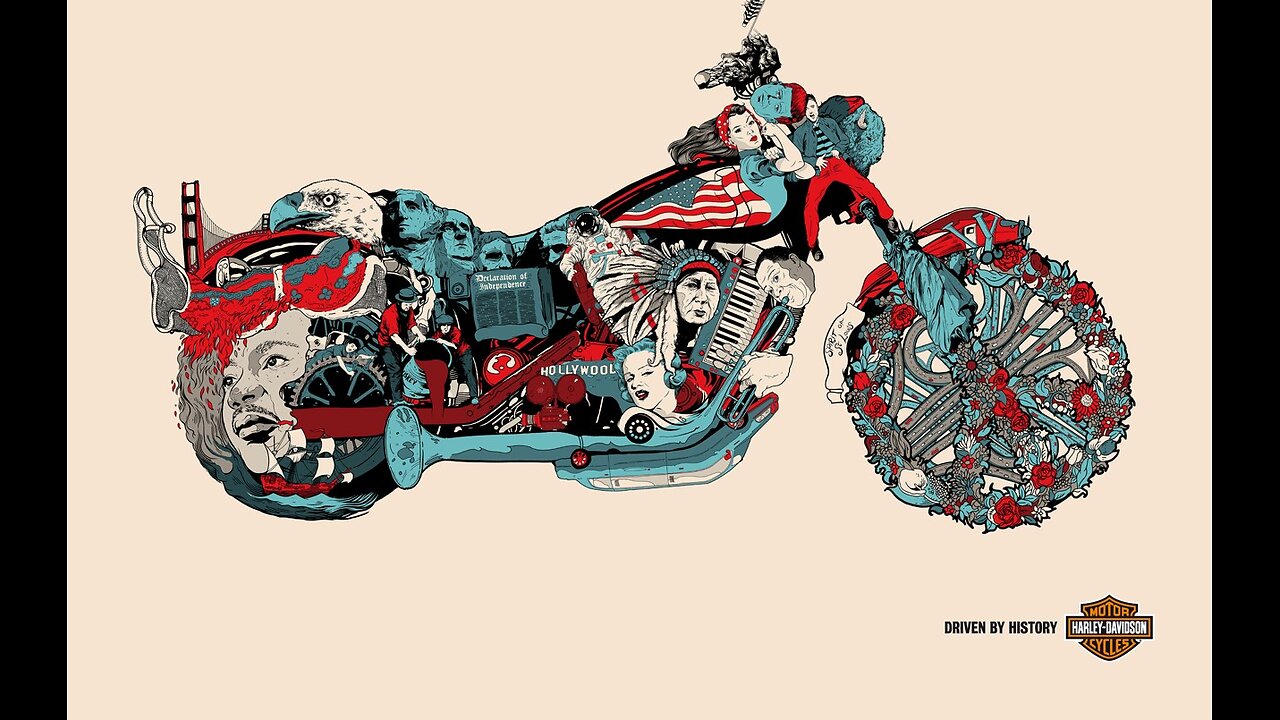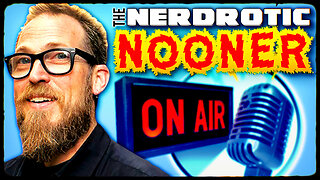Premium Only Content

A Short History of Harley Davidson Motorcycle Evolution 1903 - 2023
Harley-Davidson, an iconic American motorcycle manufacturer, has a rich history spanning over a century. From its humble beginnings in a small shed in Milwaukee, Wisconsin, to becoming a global symbol of freedom and adventure, Harley-Davidson's journey is marked by innovation, resilience, and a deep connection with its riders. Here's a concise look at the evolution of Harley-Davidson motorcycles from 1903 to 2023:
Early Years (1903 - 1920)
1903: The Founding
Origin: Founded by William S. Harley and Arthur Davidson, with help from Arthur's brothers, Walter and William.
First Motorcycle: Built in a wooden shed, the first bike featured a 116cc engine and a top speed of about 25 mph.
1905-1909: Early Production and Expansion
1905: First Harley-Davidson sold to the public.
1907: Harley-Davidson Motor Company incorporated. Introduction of the 45-degree V-Twin engine, a signature design that would define Harley-Davidson.
1909: Launch of the first V-Twin engine motorcycle with 7 hp, setting the stage for future developments.
Growth and Innovation (1920 - 1940)
1920s: Establishing a Reputation
1920: Harley-Davidson becomes the world's largest motorcycle manufacturer.
1929: Introduction of the iconic "Flathead" engine, an air-cooled, side-valve design that became synonymous with Harley-Davidson's durability.
1930s: The Depression Era
1932: Introduction of the "RL" series, catering to a diverse range of customers.
1936: Launch of the "Knucklehead" engine, known for its reliability and power, with a 61 cubic-inch (1000cc) displacement.
War and Post-War Era (1940 - 1960)
1940s: Wartime Production
1941-1945: During WWII, Harley-Davidson produced over 90,000 WLA motorcycles for the U.S. military, earning the nickname "The Liberator."
1948: Introduction of the "Panhead" engine, featuring aluminum heads and better oiling systems.
1950s: Rise of the Biker Culture
1952: Introduction of the K model, a precursor to the Sportster series.
1957: The first Sportster, the XL, is launched. Known for its speed and agility, it becomes a favorite among enthusiasts.
The Modern Era Begins (1960 - 1980)
1960s: Corporate Changes and New Models
1965: Harley-Davidson goes public and introduces the "Electra Glide" with an electric starter.
1969: Merger with American Machine and Foundry (AMF), leading to increased production but later issues with quality.
1970s: Customization and Cultural Impact
1971: Introduction of the FX Super Glide, the first factory custom motorcycle.
1977: The FXS Low Rider and XLCR Cafe Racer models are launched, embracing the custom and performance trends.
Resurgence and Innovation (1980 - 2000)
1980s: Revival and Independence
1981: A group of 13 investors, led by Vaughn Beals and Willie G. Davidson, buy back Harley-Davidson from AMF.
1983: Formation of the Harley Owners Group (H.O.G.), fostering a community of loyal riders.
1984: Launch of the Evolution engine, or "Evo," improving reliability and performance.
1990s: Technological Advancements and New Models
1990: Introduction of the "Fat Boy," a model that became an icon of the 1990s.
1994: The FXSTSB Bad Boy, featuring retro styling, is released.
1999: The Twin Cam 88 engine is introduced, offering more power and smoother performance.
The 21st Century and Beyond (2000 - 2023)
2000s: Embracing Change and Global Expansion
2001: Introduction of the V-Rod, featuring the Revolution engine developed in collaboration with Porsche.
2006: Launch of the 96 cubic-inch Twin Cam engine, further enhancing performance.
2009: Introduction of the XR1200, inspired by the flat-track racing heritage.
2010s: Heritage and Innovation
2011: Launch of the Blackline Softail, focusing on minimalistic and dark custom styling.
2014: The Project RUSHMORE models are introduced, enhancing touring bikes with modern technology.
2019: Introduction of the LiveWire, Harley-Davidson’s first electric motorcycle, marking a significant shift towards electric mobility.
2020s: Electrification and Adaptation
2020: Launch of the Pan America, Harley-Davidson's first adventure touring motorcycle.
2021: The Serial 1, an electric bicycle brand, is introduced, expanding into new markets.
2022: Introduction of the Nightster, revitalizing the Sportster line with a new Revolution Max engine.
2023: Celebrating 120 years with special anniversary models and continued innovation in electric motorcycles and adaptive designs.
Key Innovations and Trends Over the Decades
V-Twin Engines: From the early 45-degree V-Twin engines to the modern Milwaukee-Eight, the V-Twin has been central to Harley-Davidson's identity.
Customization: Harley-Davidson has long been synonymous with customization, allowing riders to create unique motorcycles that reflect their personalities.
Community: The Harley Owners Group (H.O.G.) and events like Sturgis have cemented a strong sense of community among riders.
Technology: Advancements in engine technology, rider aids, and recently, electric propulsion, have kept Harley-Davidson at the forefront of innovation.
Cultural Impact: From WWII to Hollywood, Harley-Davidson motorcycles have been cultural icons, symbolizing freedom, rebellion, and the open road.
Harley-Davidson’s history is a testament to its resilience and ability to adapt while maintaining its core values. As it continues to innovate and expand into new markets, the brand remains a beloved emblem of the motorcycling world.
-
 1:01:55
1:01:55
Timcast
2 hours agoGazans BLOCKED From Entering US, Trump CUTS Deportation Backlog For First Time In 20 YEARS
38.7K46 -
 33:38
33:38
The Rubin Report
1 hour agoDebunking the Many Myths of Hungary
8482 -
 2:24:15
2:24:15
Nikko Ortiz
3 hours agoLive - Hard To Watch Videos / Police Officers Get Into Serious Gun Fighs
23.5K4 -
 1:58:33
1:58:33
Steven Crowder
4 hours agoCan Donald Trump Bring Peace: Zelensky and EU Leaders Massive visit to Washington
188K196 -
 LIVE
LIVE
Nerdrotic
3 hours agoSuperman GUNNED DOWN | Marvel Phase SUX - Nerdrotic Birthday Nooner 508
624 watching -
 LIVE
LIVE
Side Scrollers Podcast
2 hours agoPETA AMBUSHES Nintendo + UK THREATENS 4Chan + Roblox Situation Is Crazy | Side Scrollers Live
1,322 watching -
 LIVE
LIVE
LFA TV
6 hours agoLFA TV ALL DAY STREAM - MONDAY 8/18/25
4,374 watching -
 LIVE
LIVE
The Mel K Show
1 hour agoMORNINGS WITH MEL K -Buckle Up! The Old Guard Will Not Go Quietly 8-18-25
877 watching -
 DVR
DVR
Flyover Conservatives
12 hours agoEpstein Files, FBI Failures & The Fight for Real Accountability - Breanna Morello | FOC Show
4.72K1 -
 LIVE
LIVE
GloryJean
3 hours agoAggressively Sniping My Way to WINS 🖱️ 6.7 K/D
16 watching